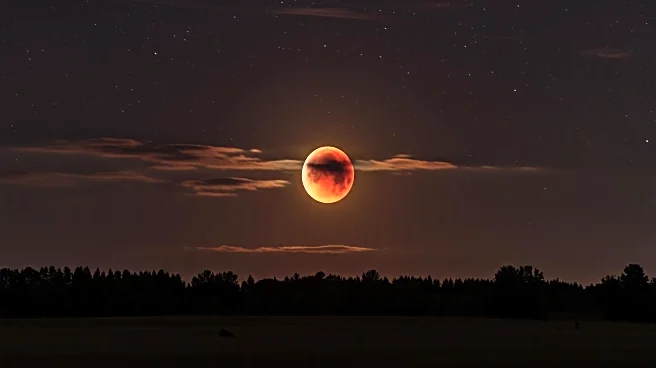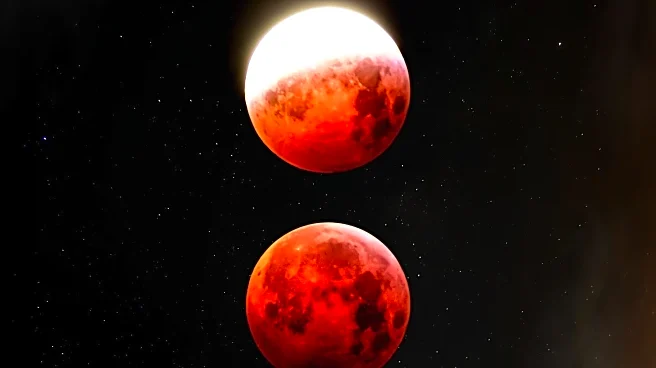What's Happening?
A total lunar eclipse, known as a 'blood moon,' is set to occur on September 7, 2025. However, this celestial event will not be visible from the United States, including New Jersey. According to Space.com, prime viewing locations include Asia, East Africa, and Western Australia, with partial visibility in Europe, Eastern Australia, and New Zealand. During a total lunar eclipse, the moon takes on a red or orange hue due to sunlight filtering through Earth's atmosphere, a phenomenon explained by NASA. The next total lunar eclipse visible in the Americas is scheduled for March 3, 2026.
Why It's Important?
The upcoming lunar eclipse highlights the global nature of astronomical events and the limitations of geographic visibility. While U.S. residents will miss out on this particular eclipse, it underscores the importance of international collaboration and online resources for global skywatching. Events like these can boost interest in astronomy and science education, encouraging people to explore celestial phenomena. Additionally, the eclipse serves as a reminder of the interconnectedness of Earth's atmosphere and celestial bodies, offering insights into atmospheric science and optics.
What's Next?
For those interested in viewing the eclipse, online platforms such as Time and Date will provide livestreams, allowing global audiences to experience the event virtually. The next opportunity for Americans to witness a total lunar eclipse will be in March 2026, with another partial eclipse occurring in August 2026. These future events will provide more accessible viewing opportunities for U.S. residents, potentially increasing public engagement with astronomy.













